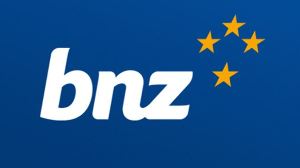
Some banks have already dropped mortgage interest rates in anticipation and suggest further cuts could be on the cards.
The BNZ is expecting the RBNZ to signal a decent chance of an OCR cut to 2.75% in its Monetary Policy Statement (MPS) at next week’s review.
BNZ research head Stephen Toplis says while he can see the argument for taking a more cautious approach especially if the Monetary Policy Committee (MPC) feels it does not want to push an incoming new governor into a corner, equally, an admission that even more work than a 2.75% low might be required is plausible.
While 2.75% is the BNZ’s central forecast for the OCR low, he says the odds of 2.5% are marginally higher than a 3% stall.
“There was a chance rising inflation expectations could derail the RBNZ’s easing strategy, but the broader suite of inflation expectations data over the past few weeks has not been threatening. Importantly, the key RBNZ survey data show expectations to be well contained, Toplis says.
“If there is any concern it could emanate from rising household inflation expectations, as per the ANZ survey. But, really, with ‘essentials’ inflation continuing to be heady, it’s not surprising inherently adaptive household expectations have pushed higher.”
He says the key outstanding question is: will the RBNZ go so far as to bake next week’s OCR cut in the cake, or will it prefer to appear ambivalent with a focus on the data prints ahead?
“In our opinion, one more nudge to 2.75% is a minimum requirement.”
Words as well as cut needed
The market’s pricing in of a 0.25% cut on Wednesday makes sense to the ANZ.
“The domestic economy is faltering, and while we’re probably near peak pessimism, it looks like it could do with more support, Sharon Zollner, ANZ chief economist says.
“Even assuming Wednesday’s decision is a given, the RBNZ could nonetheless move the market considerably with both a cut and its words.
Zollner says while the country is certainly in a funk, it’s not, however, a given the RBNZ is going to be revising its OCR track a whole heap lower.
“It will ultimately come down to what message the committee wants to send in its MPS. On that front, something similar to May’s statement wouldn’t surprise, i.e. we’re likely easing again, but no promises as regards timing.”
ANZ’s economists believe a shallow track bottoming out about 2.70-2.75% sometime this year will fall into that category.
“If the business inflation expectations data due two days before the MPS is benign, the committee may well feel comfortable publishing a lower track than otherwise,” Zollner says.
The bank continues to forecast an OCR of 2.50% but doesn’t expect the RBNZ to signal that yet.
Caution on more cuts
Westpac economists say the RBNZ is at the fine-tuning stage of the easing cycle.
While an OCR drop to 3% is likely, Westpac believes it will trough at this level and further cuts will be more cautious, while inflation remains high and the economic outlook unclear.
The significant monetary easing over the past year has taken interest rates to modestly stimulatory levels, Kelly Eckhold, Westpac chief economist says.
“The lags from when lower interest rates impact the economy are long and are likely to have their most tangible effects in the next six-12 months.”
He says while the more interest rate-sensitive components of inflation have moderated, there continue to be large increases in administered costs, such as council rates, and food prices have risen.
“The economy has significant excess capacity, which provides confidence inflation will moderate, but there seems little probability it will drop lower than 2% given existing policy settings.”
Eckhold will be the speed and strength of New Zealand’s economic recovery from here that will determine whether any further OCR cuts are needed.
Unemployment figures push case for cuts
Kiwibank, which has long pushed for an OCR low of 2.5% says adding to an already tall pile of evidence that the economy needs stimulus, is the June quarter Kiwi jobs report.
Unemployment lifted to a five-year high. And it would have been higher if not for the steeper-than-expected slide in the participation rate to a four-year low, Jarrod Kerr, Kiwibank chief economist says.
That in itself is a sign of a weak labour market, he says.
“People are leaving the labour market because it is simply not as attractive as it once was. In fact, the labour force shrank over the year. That doesn’t happen often. The 0.4% decline is the deepest since March 2013.”
Labour demand is soft. The June quarter recorded a 0.1% decline in employment. And the 0.1% gain in the March quarter was revised to flat. On an annual basis, employment growth is running at the weakest rates since the GFC.
Overall, the labour market is weaker than the RBNZ had expected back in May, Kerr says. Then it was predicting a 0.2% gain.
However, he says alongside contained and anchored inflation expectations, the door is open for a 0.25% rate cut but the cash rate will need to go to 2.5%, eventually.



Comments
No comments yet.
Sign In to add your comment